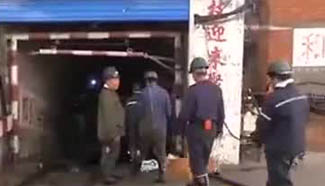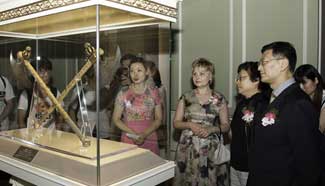
With the enhancement of China’s comprehensive national strength, the Chinese military has become increasingly noticeable in the world arena. A review of the past year shows it has been more confident in opening up to the world, so as to build up a peaceful and stable international security environment, and to contribute to the development of a harmonious world.
Frequent high-Level Exchanges
High-level exchanges of personnel between militaries of different nations have been a weathervane of military relations and a positive driving force behind the deepening of military exchanges. Last year, the Chinese People’s Liberation Army (PLA) increased its international exchanges of personnel, which helped establish mutual trust and friendship between nations.
The high-level exchanges of personnel between the forces of China and the United States were remarkable. In April, U.S. Defense Secretary Chuck Hagel visited China, and boarded China’s first aircraft carrier, the Liaoning. In May, PLA Chief of General Staff Fang Fenghui visited the U.S. and boarded the USS Ronald Reagan aircraft carrier and the USS Colorado littoral combat ship, and visited the largest U.S. army base, Fort Bragg, and elite troops. In July, U.S. Chief of Naval Operations Admiral Jonathan W. Greenert visited China, and had talks with Defense Minister Chang Wanquan and Navy Commander Wu Shengli. The same day, the two countries held talks in Washington on counter-terrorism issues. In October, the Chinese and U.S. defense ministries held the 15th high-level talks on defense issues, and shared views, extensively and in depth, on issues like the relationship between the two nations and armies, international and regional issues, and other issues of mutual interest. The frequent exchanges of personnel last year indicate that relations between the two militaries have been steadily extending and deepening.
Looking back, it can be seen that the current situation has been hard won and should be cherished. The Chinese and U.S. armies have opened up to one another regarding some key weapons and equipment that have demonstrated their core combat capabilities. It indicates that the two sides have attempted to lay a sound foundation for the development of healthy military relations, and shows the mutual trust between the two armies has been increasing steadily, and maturing gradually. It is helpful they are developing a new model of major-country relationship.
In 2014, military exchanges between China and Russia were very fruitful. In October, Vladimir, commander of Russia’s eastern military command, visited the Beijing Military Area Command of the PLA, to discuss better coordination. In November, Russian Defense Minister Sergei Shoigu visited China. At the end of 2014, senior commanders of the two armies summed up the year’s fruitful achievements in some practical fields, regarding high-level visits, joint exercises, and special exchanges, and outlined expectations of future military cooperation.
Last year, China also continuously and steadily expanded military exchanges and cooperation with Australia and other countries. In the first half, commanders of Australia’s three services visited China. In July and October, Fan Changlong, vice chairman of China’s Central Military Commission, met with Defense Minister David Johnston in China and Australia. In December, Australian Chief of Defense Force Mark Binskin and Secretary of Defense Dennis Richardson visited China. The two armies reached a consensus to push forward defense relations on the basis of mutual respect. In 2014, the two countries had held 17 meetings on defense issues. China held talks on defense issues with many countries in a multiple forums and various levels and channels, including discussions with India, Pakistan, Vietnam, Thailand and other neighboring countries last year. The frequent military exchanges laid a sound foundation for preventing misunderstandings and increasing security and mutual trust.










